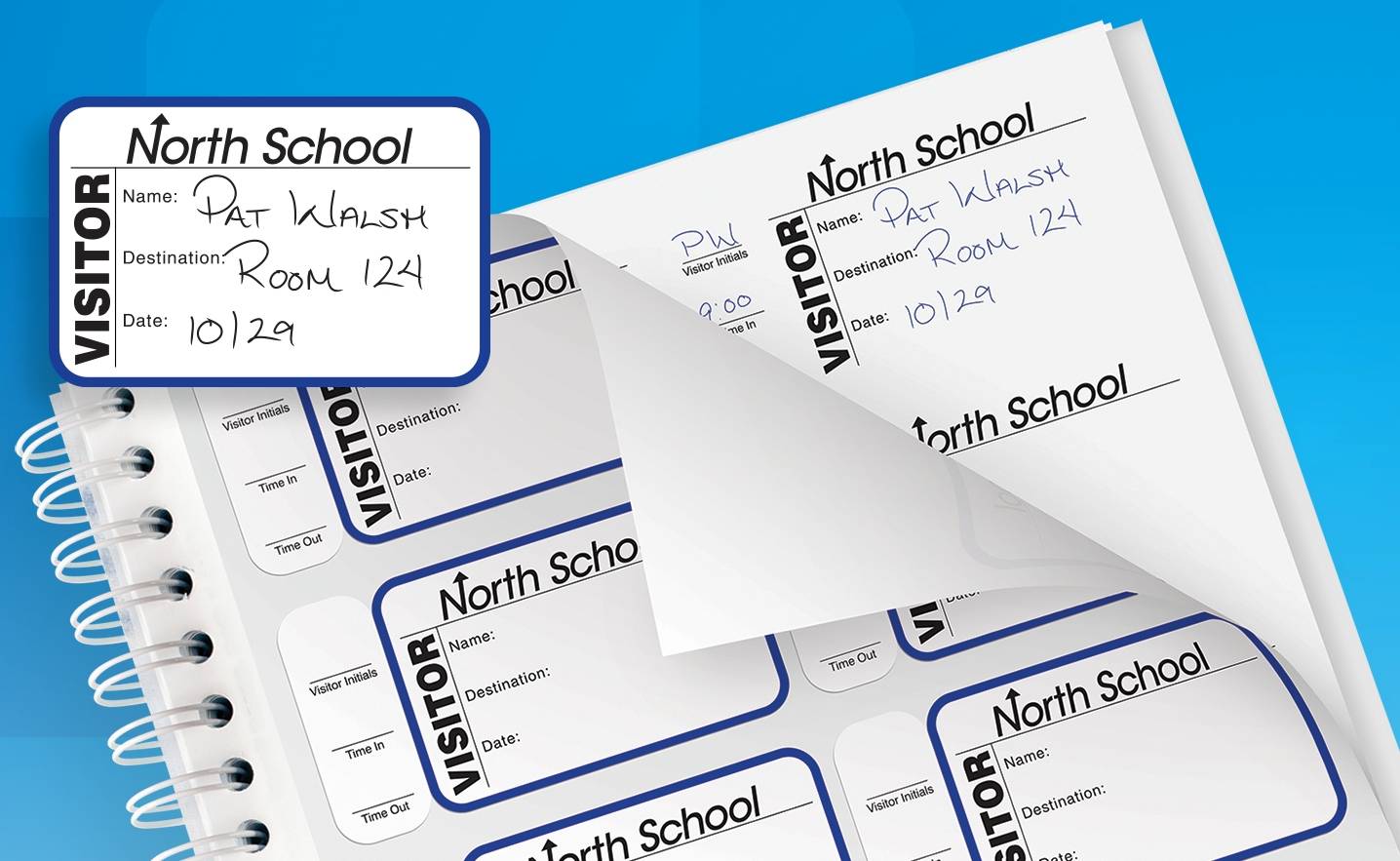Blog
Pro's and Con's of a Manual Visitor Sign-In System
by Paul Kazlauskas

A manual visitor sign-in system is a handwritten way of identifying and tracking the visitors that come into any school, healthcare facility, or business. This system usually consists of a visitor filling out a visitor’s badge to be worn while on the premises. Occasionally, there is a log book to fill out that provides a record of the visitor’s stay, logging such items as their name, the date, time in, time out, and person visiting/destination. Many manual visitor badges are custom-printed to include the facility logo and name imprint. Some types of visitor passes have “time-expiring” technology. This means the visitor passes change color overnight to prevent badge reuse the next day.
Here is a list of PRO’s to having a manual visitor sign-in system…
- Low cost: A manual visitor sign-in system is much less expensive than an electronic visitor management system. There is no equipment to buy beyond a book of visitor badges and perhaps a separate visitor log book (or get both processes one book). There are no software licensing fees or additional system components to purchase either.
- Minimum training: Most everyone has, at some point, filled out a visitor sign-in sheet. They aren’t complicated and the fields to fill in are self-explanatory. The great majority of visitors to any type of facility wouldn’t need assistance filling out a manual visitor log.
- Little or no overhead (badges, pen, writing surface): An electronic visitor management system requires some space to be set up properly. There must be room for a computer, a printer, and any additional equipment (driver’s license reader, business card scanner, etc). A manual sign-in book requires a lot less space and the only additional equipment you need is a pen.
- Evacuation register/fire list (if legible and visitors sign out): In case of an emergency, the manual visitor sign-in book can be grabbed quickly during an evacuation. This lets you know all non-employees in the facility and that information can be passed to Fire/Police personnel so they know who is still in the building.
Here is a list of CON’s to having a manual visitor sign-in system…
- Illegibility of handwriting: It is a fact of life that many people have messy handwriting. While signing in to a visitor log book they probably aren’t focused on, chances are their handwriting will get even worse. Security is compromised if any incident occurs and the facility’s security team can’t read the visitor log book. There is no way to get the information that you can’t read (no backups).
- Most log books are not confidential: Many types of visitor log books don’t contain a privacy feature. Once a visitor signs in, all visitors after them can see their details because the information is exposed. People can easily browse the details of others.
- Time consuming sign-in process if separate badge and log book are used: Most manual sign-in systems offer either a visitor badge book (for filling out and obtaining a visitor badge to wear) or a log book to fill out that captures the presence of the visitor (but doesn’t offer a badge). One type of book without the other comprises a facility’s security. If both are in use, the process is time consuming for the visitor to complete. If the front desk is experiencing a busy time of day, lobby lines could form and make a negative impression on your visitors.
- Visitors’ credentials/background must be verified manually, if at all: Electronic visitor management systems offer the ability to capture the credentials of a visitor by using a driver’s license reader or business card scanner. This process is fool-proof. Some types of VMS even offer the ability to do a quick background check. If a facility is using a manual visitor sign-in process, the receptionist or a security guard would have to ask for I.D. to verify that a person is who they say they are. This is an extra step that takes time and could also be forgotten about.
- No photo on badge, making verification of identity difficult and badges interchangeable: Since manual sign-in systems can’t add a photo to the visitor pass, visually verifying an identity is hard. Once in the facility, any manual visitor pass can be removed from someone and given to another person. Without a photo, visitor badges that are transferred to another person can go undetected.
Want the latest, best security practices delivered straight to your inbox? Enter your email address in the "Subscribe" area (on the left side navigation).
Download Free Whitepaper ›
Our exclusive "Guide to Choosing a Visitor Management System"
Follow us on Social Media for more security content.![]()
![]()
![]()
Posted on 3/18/2015



 Paul Kazlauskas
Paul Kazlauskas
 Andrew Jones
Andrew Jones